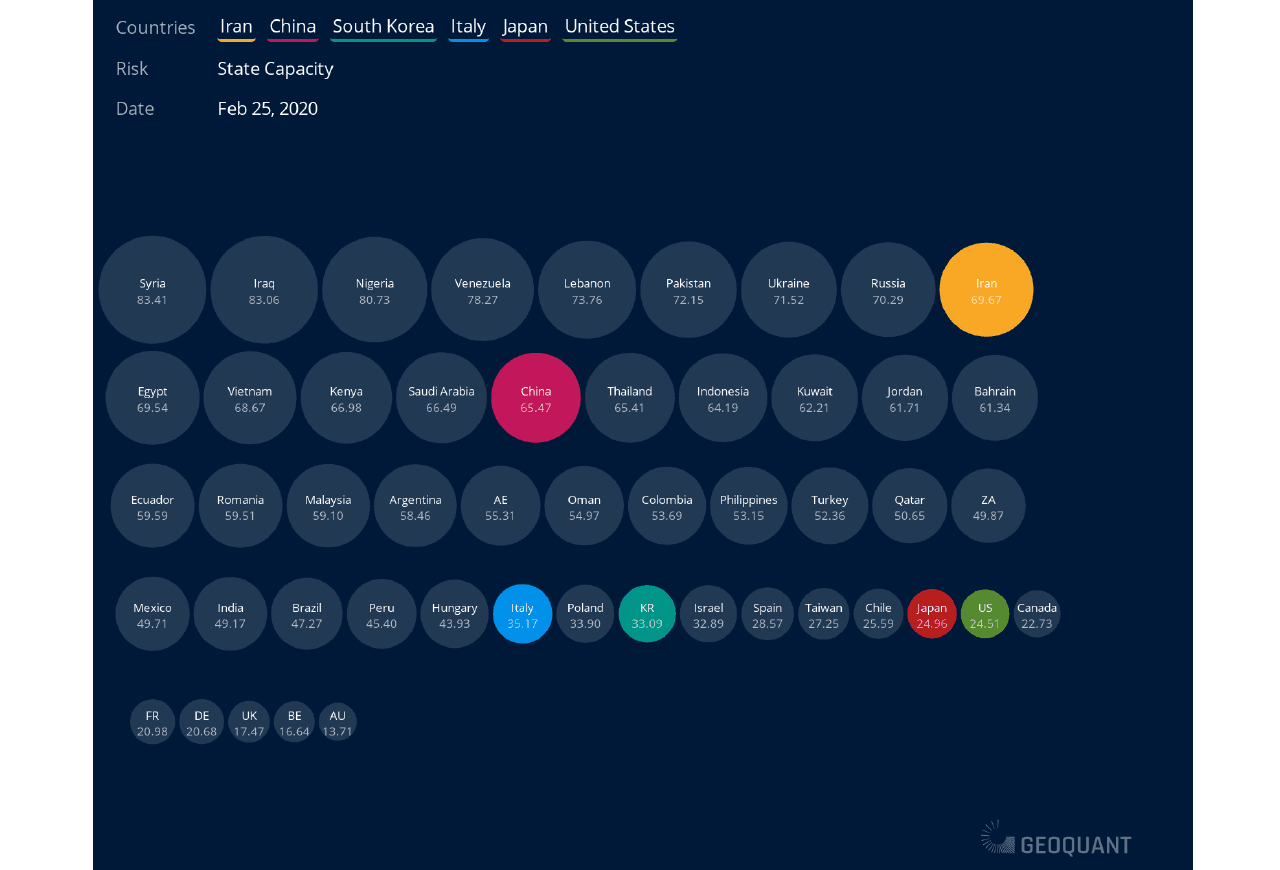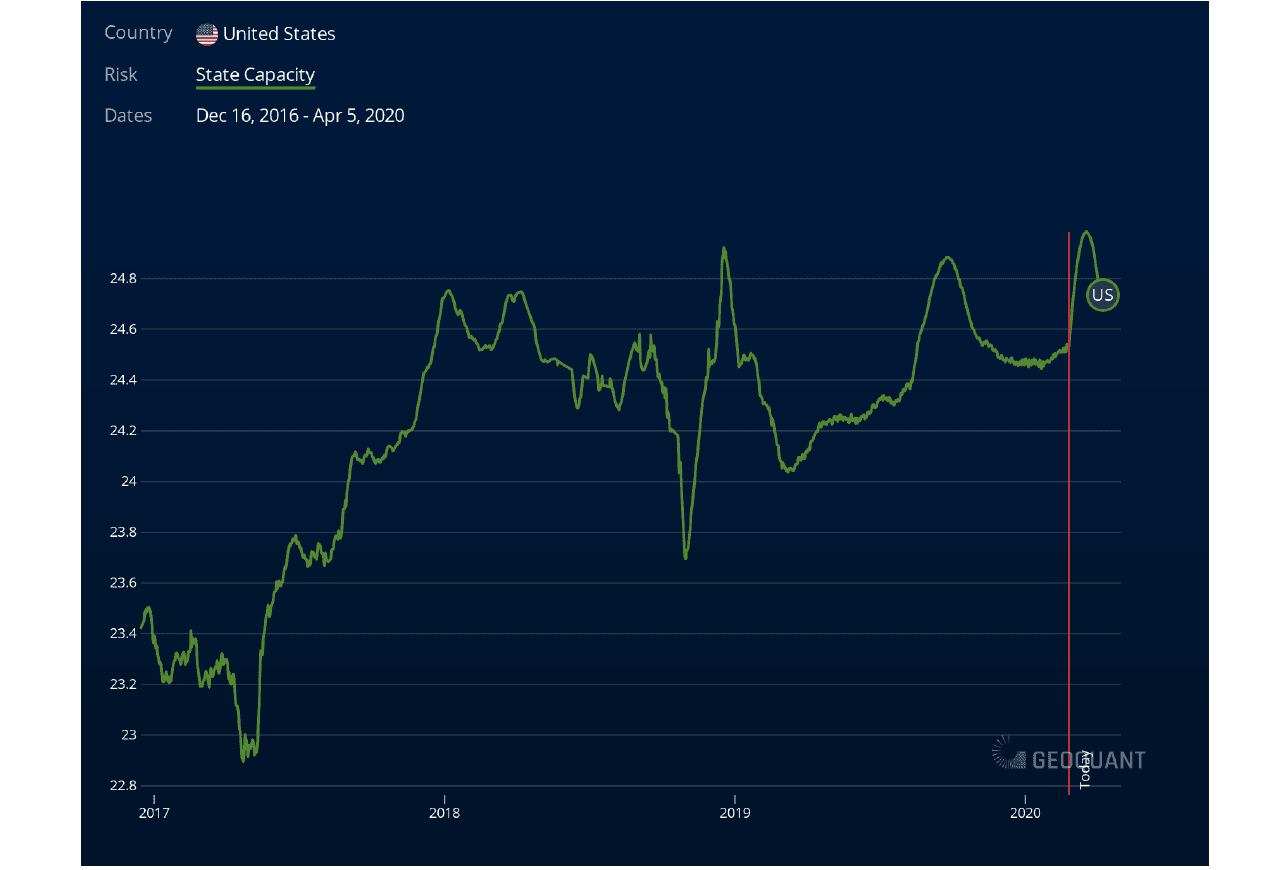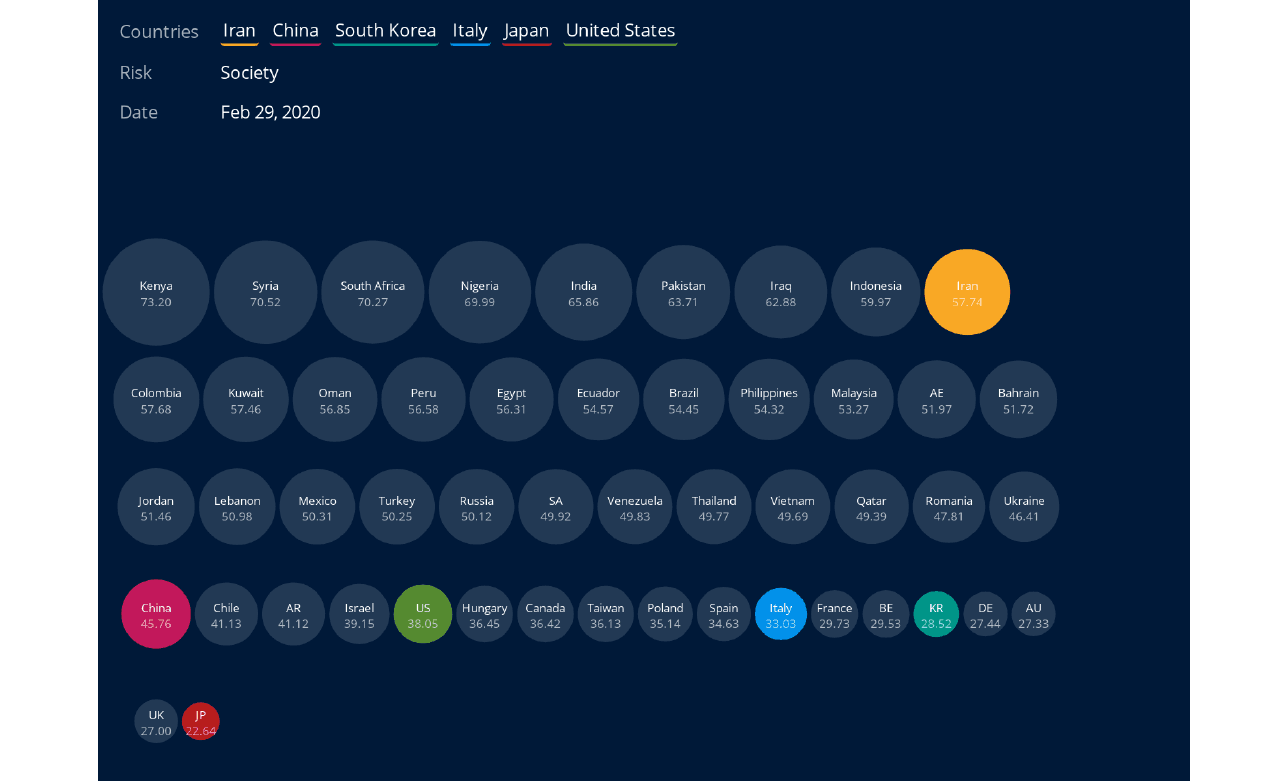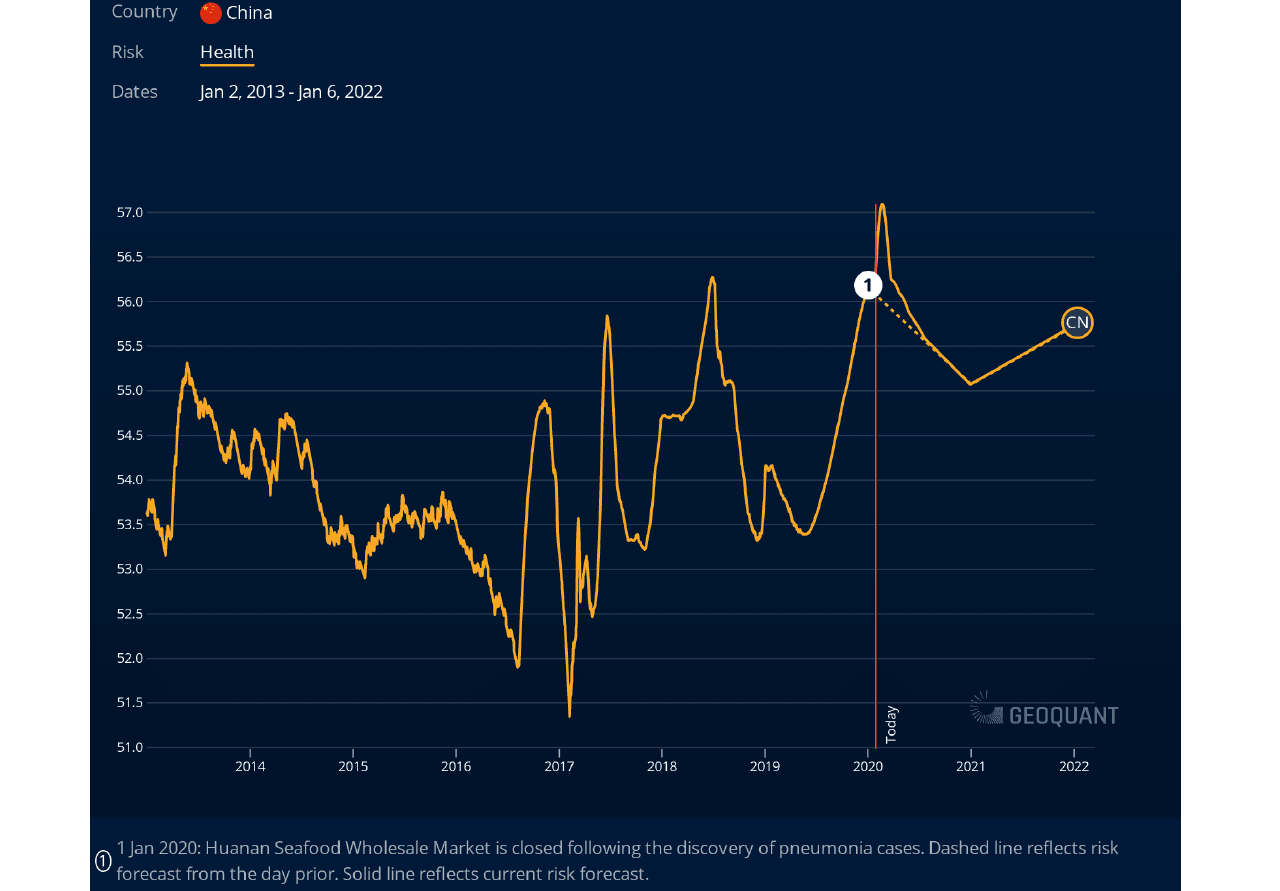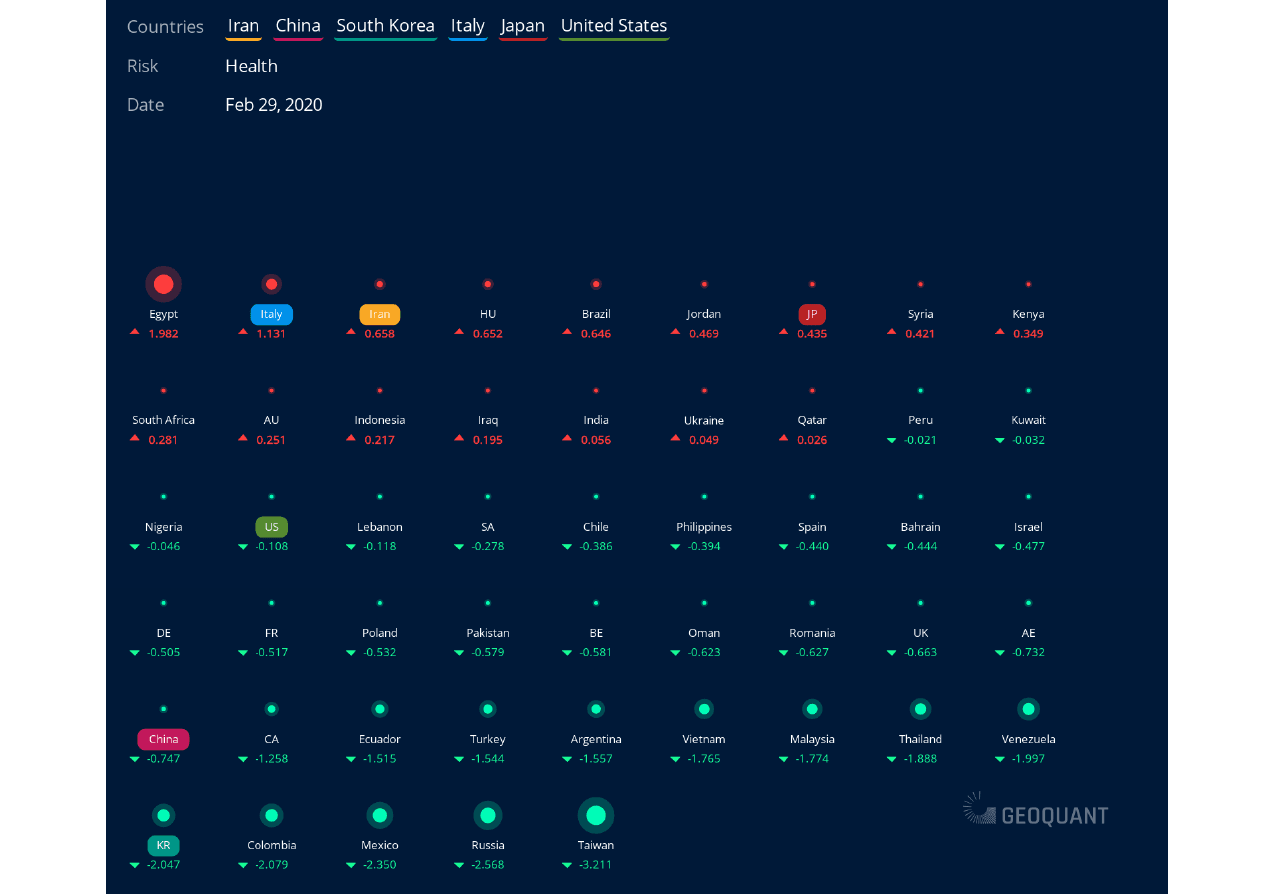GeoQuant examines the global state capacity risk, social risk and health risk in the wake of coronavirus.
Q4 2019 hedge fund letters, conferences and more
Take-Aways
- Our high frequency data suggests that among economically prominent and exposed countries, the U.S., Japan, South Korea and Italy (in that order) have the lowest State Capacity Risk in responding to the coronavirus health shock (although U.S. State Capacity Risk is clearly increasing). China’s State Capacity Risk is significantly higher than the previous four countries, while the level of risk Iran is especially high/worrying.
- A country’s level of Social Risk is also key to gauging a government’s ability to weather a potential pandemic shock. Japan and South Korea clearly have the lowest Social Risk, followed by Italy. The United States – highly polarized but also highly developed – is next, followed by the less polarized but less developed China. Iran again stands alone as the riskiest country in this set.
- Over the next three months, Health Risk – a key sub-component of overall Social Risk – is forecast to decrease in South Korea and China, while Japanese, Iranian and Italian Health Risk is forecast to increase.
- Per above, while Japan’s low State Capacity Risk and Social Risk should help the government respond to this threat, Italy will have a relatively harder road ahead. Iran, strikingly, is the country most at risk across the board.
Analysis
The spread of coronavirus is raising fears of a global pandemic, rattling markets and generating a range of official (and sometimes contradictory) statements regarding governmental plans/action to respond to this shock.
Here we examine the political factors most important to gauging the relative strength, effectiveness and credibility of these responses: State Capacity Risk and overall Social Risk, including Health Risk.
State Capacity Risk
Among our daily Governance Risk indicators, State Capacity Risk– which tracks governments’ ability to deliver public goods/services and implement/enforce policy – is most relevant to this analysis. It is the state capacity underlying a government’s plans and actions that will determine the credibility of those plans and the effectiveness of subsequent actions. The figure below summarizes the current level of State Capacity Risk among the most prominent coronavirus-exposed countries, as well as the U.S.
Per above, the U.S. and Japan have the greatest state capacity (least risk) to respond to the coronavirus shock, followed by South Korea and Italy. China’s State Capacity Risk is significantly higher, while the level of risk in Iran is especially worrying.
In addition, note that while U.S. State Capacity Risk is the lowest among this country set, the risk trend is clearly increasing since 2017, and is set to increase further in the coming days.
Per our previous analyses, our system tracks specific developments around the coronavirus most directly via our Health Risk indicator, which is in turn a key driver of our overall daily Social Risk score (more on Health Risk forecasts below). Social Risk also monitors the broader levels of social polarization and human development in a given country, both of which are key to evaluating (i) how prepared a society is for dealing with a health shock like coronavirus; and (ii) whether the government’s policy response will be socially effective. In general, a less divided, more developed society (i.e. one with lower Social Risk) will be better able to cope and respond.
As above, the figure below summarizes the current level of Social Risk among the most prominent coronavirus-exposed countries, as well as the U.S.
Here we see a slightly different ranking than for State Capacity Risk: Japan and South Korea clearly have the lowest Social Risk, followed by Italy. The United States – highly polarized but also highly developed – is next, followed by the less polarized but less developed China. Iran again stands alone as the most risky country in this set.
Health Risk
We conclude by isolating Health Risk from the wider Social Risk analysis. Note again that our Chinese Health Risk indicator has been increasing since 2H/2019 and is currently set to peak and begin declining in early March.
We can also use our system to look beyond China to our current three-month forecasts for Health Risk across the 51 countries in our system, again highlighting the most affected coronavirus countries plus the U.S. Keep in mind that the figures and bubbles below represent the forecasted change in Health Risk scores over the next three months, independent of their current level.
The forecast suggests decreasing risk trends in South Korea and China, while Japanese, Iranian and Italian Health Risk are forecast to increase. Per above, while Japan’s low State Capacity and Social Risk should help the government respond to this trend, Italy will have a relatively harder road ahead. Iran, strikingly, is the country most at risk across the board.

